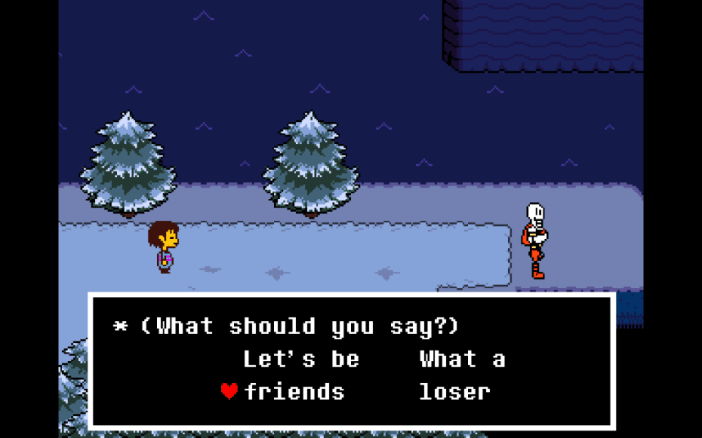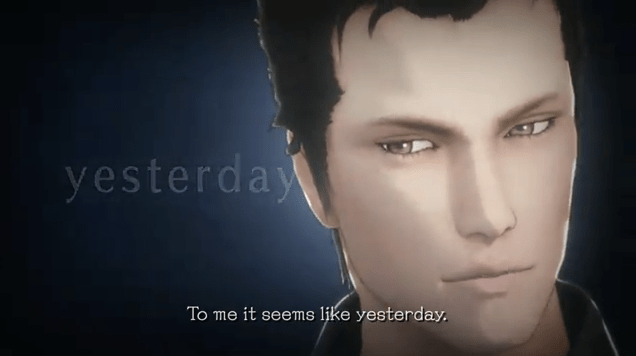Caution: Spoilers Ahead
The definitive answer is “no.” However, every game needs to provide motivation for the player, a reason for he or she to interact with the game in the first place. Storytelling is just one of many effective ways to provide motivation. It is not always necessary for video games to have story, and some games are downright hindered by stories that are haphazardly squeezed into reluctant gaming experiences. Furi is such a game.
Furi suffers from a tangible disconnect between its gameplay and its storytelling. Not only are the two completely independent from one another, both aspects are lacking in their own right from the story. Let’s start with the gameplay.
I’ll begin by saying that Furi’s gameplay is the stronger of the two aforementioned halves. It consists of fast-paced combat that requires your protagonist, The Stranger, to avoid a series of patterned AOE attacks and bullets instigated by the boss-like enemies. Yes, this game is a boss rush. There are no minions to practice the gameplay mechanics and combat against, so the learning curve is quite steep. This is not necessarily a bad thing. The difficulty of the game is an understandable draw for gamers who crave a challenge and are motivated by feeling themselves get better after numerous attempts.

The problem with the gameplay is the eventual lack of variety. Even though the bullet attacks and AOE patterns differ, the potential of the shoot-em-up, pseudo-twin-shooter mechanic seems to stagnate almost immediately after the first boss. And it stays this way throughout the entire game. The developers don’t stretch this mechanic much farther from the most you can get out of the first fight, and this is a missed opportunity considering how much potential the game had from the first fight. Smaller games like this have the luxury of stretching a single mechanic to its limit, becoming more creative over time and forcing the player to truly grasp the possibilities of the mechanics being presented. When developers don’t do this, the mechanic gets boring quickly. The problem with the repetitive nature of the gameplay is compounded by the uniqueness of the character designs without much expansion on those designs.
As a gamer, you would expect that characters with drastically different designs and boss arenas would have vastly different fighting styles. But this isn’t the case. A majority of the bosses have the same attack patterns and fighting styles: spew a number of bullets at the player, attack using a large AOE attack, and come in close for some quick segments of close-quarters combat. This sort of repetition among enemies you would expect from lesser enemies, not for almost every single boss fight. This lack of variety also greatly contrasts with the hints of story that are sprinkled into the game.
It will come as no surprise to fans of Afro Samurai that Furi’s character designs were done by the writer and illustrator of Afro Samurai, Takashi Okazaki. Both The Stranger and Afro look remarkably similar and the overarching story is like Afro Samurai’s but in reverse. Instead of a man climbing up the ranks to meet a self-imprisoned foe, a man descends a massive space jail in order to free himself from unwanted imprisonment. The story is simple and direct. With all due respect, the general plot should have ended there. Instead, the game attempts to build character backstories for each of the jailers keeping the protagonist imprisoned in the space jail. This information is given to us by The Voice, a character wearing a bunny mask who serves as the equivalent to Afro Samurai’s Ninja-Ninja (they both provide a voice where the protagonist is mostly silent). The Voice’s descriptions of the jailers are foreboding and ominous but are ultimately nondescript and useless in terms of expanding the game’s lore. They provide just enough information to pique interest, but not enough to tie the story together or even justify why we need to know or feel anything about the jailers.

In all honesty, the game should have taken a hint from Capcom’s Mega Man or Suda51’s No More Heroes. Let the designs speak for themselves and let each boss’s fighting style tell us about who they are and how they fight. We don’t need the story of how they came to be here unless it affects the protagonist in some way or attempts to make us, the players, empathize with the antagonists.
I feel like Furi began to accomplish integrating the characters’ designs with their fighting styles with the final three jailers: The Burst, in which you spend much of your time searching for a hiding sniper (befitting the role of a sniper); The Edge, in which a samurai forces you into a one-on-one close quarters combat fight (befitting the role of a samurai); and The Beat, in which you dodge attacks from a number of enemies as you attempt to close in on the fleeing boss (befitting the role of a child delegating her tasks to her minions and most befitting of the purpose of a shoot-em-up, twin-shooter game). I also commend the attempts at making the player empathize with The Hand and The Song who are charged with keeping The Stranger imprisoned in order to keep the world safe, but I feel as if these attempts at pathos came from out of nowhere, as The Voice rarely, if ever, mentions why anyone wants to keep The Stranger imprisoned, as well as what the jailers are sacrificing by keeping watch. He just reiterates that they are the jailers and they are the obstacles standing between The Stranger and his freedom.

All-in-all, I feel that Furi needed both more and less. More variety in gameplay and its mechanics and less story. The walking segments where The Voice drones on about your upcoming fight don’t really add to the interactivity of the game; these could have simply been filled with transitioning cutscenes. The game could have held its own as a purely mechanics-based game. The concept was there and it was both unique and creative. Had they taken it a step further by maybe including enemies between stages or varying up the gameplay between the bosses similarly to how they varied the last three jailers, they would have had a loveable classic akin to The Binding of Isaac or Super Meat Boy, both games that expand on a single mechanic.
Instead, too much time and exposition were given to narrative character descriptions that did nothing to develop character or move the story along. I feel that it was a waste of voice actor talent and budget. Not all games need extensive stories; in fact, some are hindered by them.
Video games aren’t just games anymore.


